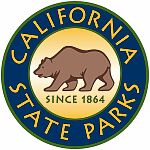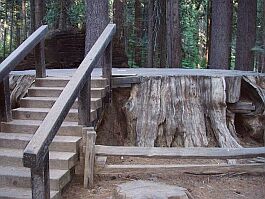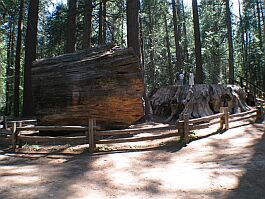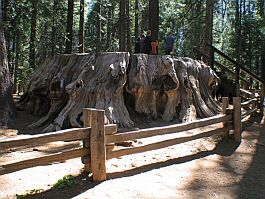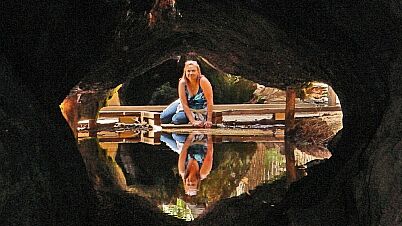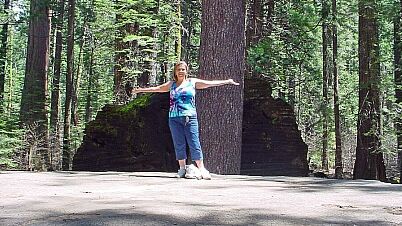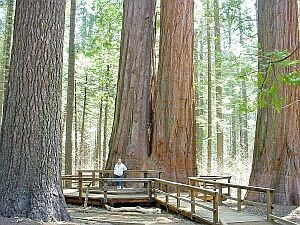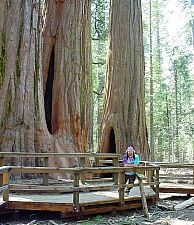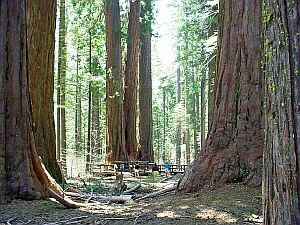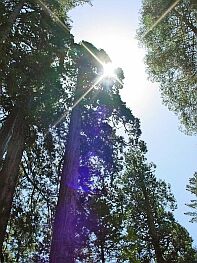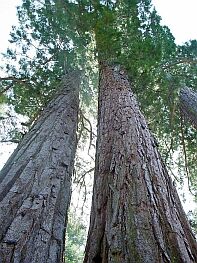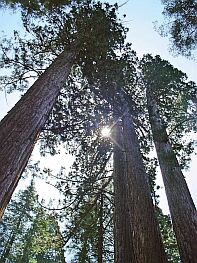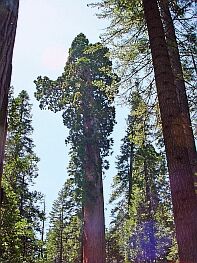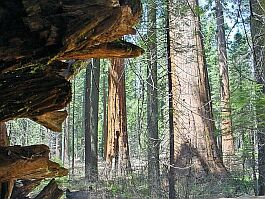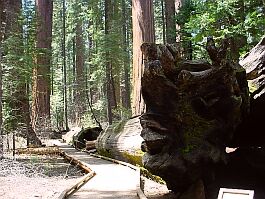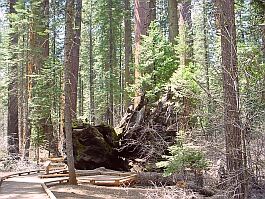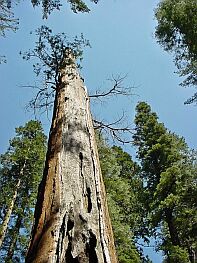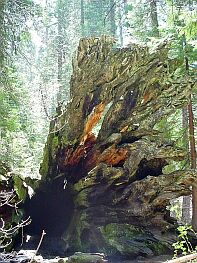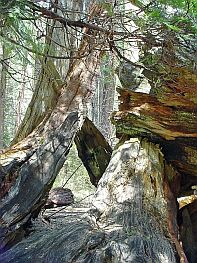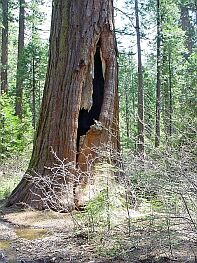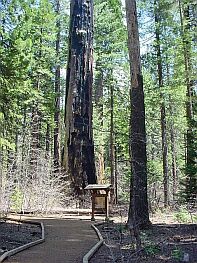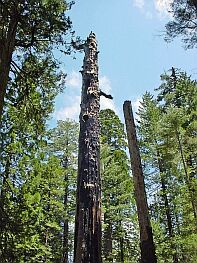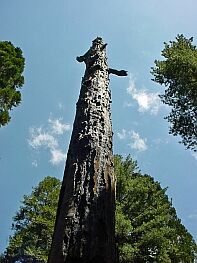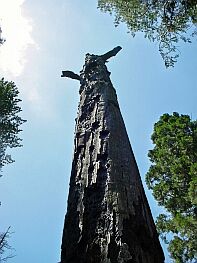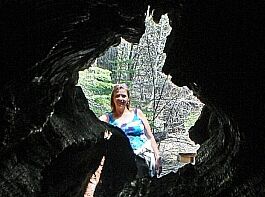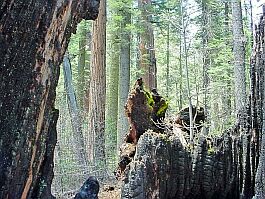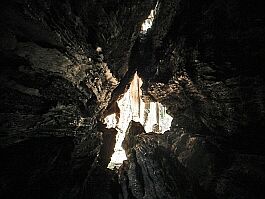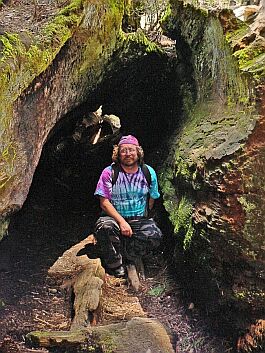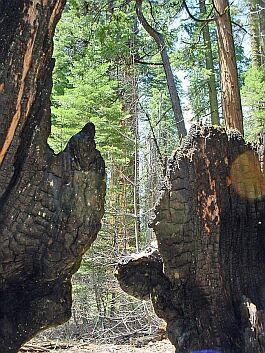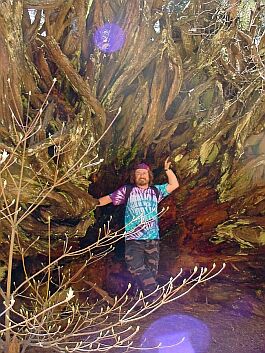 |
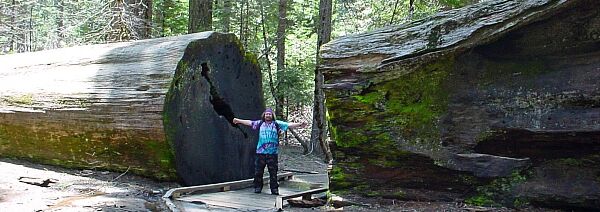
Today, California's Sierra Nevada is famous for its Giant Sequoia groves. But it wasn't until
150 years ago, that word got out to the world about these magnificent trees. And it was here in Calaveras County, where the discovery was made.
first, in 1833, explorer J. K. Leonard mentioned the trees in his diary, but never published the discovery. The second European was a man named
John M. Wooster, who carved his initial in one of the big trees in the grove in 1850. Finally, in 1852, Augustus T. Dowd published his discovery
of the big trees and this time, the world noticed. The tree discovered by Dowd survived the sudden attention only for one year and was felled in
1853 at the age of 1,244.

But that didn't stop the grove from becoming a major tourist attraction and today, it is considered the longest continuously operated tourist
facility in California. In 1931, the North Grove became a
state park, which saved the last 100 surviving Sequoia trees
in the grove from sharing the fate of the Discovery Tree.

In 1954, the South Grove was added to the park. This grove is ten times larger than the North Grove, but a lot less accessible. We will add more
information once we made it there. For now, enjoy or pictures of our visit to the North Grove in 2006.
|




